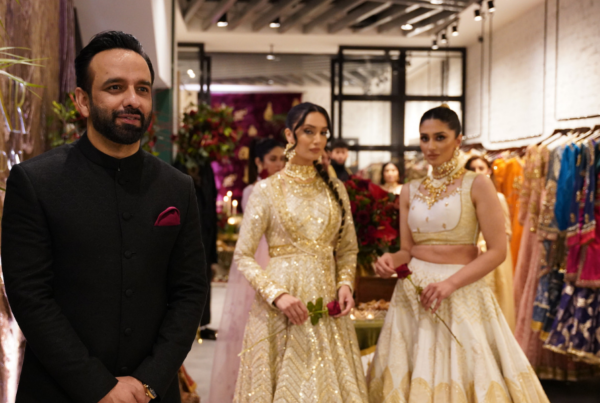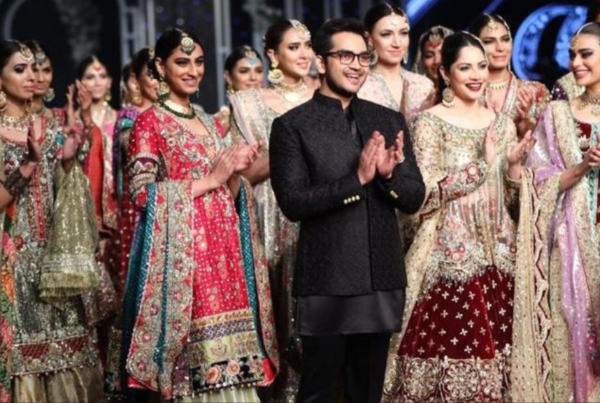Between love and hate, there’s fashion. Will politics learn from it?
(Published in Outlook India Feb 6, 2010)
Almost every Indo-Pak cultural relationship walks the thin line between love and hate. Indian films are adored, but all hell breaks loose if one takes an anti-Pakistan slant. Cricket matches between the two generate huge excitement, but a defeat leads to torn-down billboards and burnt effigies. Cricketing ties turn sour when the ipl decides to keep out Pakistani players—and love for Shahrukh Khan soars to an all-time high here when he defends Pakistani cricketers on TV.
One little-noticed aspect of the relationship, however, is marked by a serene consistency—fashion ties. Pakistani brands like Sana Safinaz have, according to reports, sold out within an hour of stocking in Mumbai or Delhi. And Indian fashion, with its vibrant colour palette of reds and oranges, is a temptation not many Pakistani women can seem to resist. Poor trade ties play spoiler in this discreet love affair. Fashion imports are mostly either ‘suitcase operations’—which risk being nabbed at customs, if the suitcases stuffed with bulk clothing get inspected—or follow an expensive indirect trade route, via Dubai.
Indian fashion is influential at both ends of the spectrum in Pakistan—those who buy fabric and get it tailored too revel in Bollywood bling. Ekta Kapoor soaps, airing on cable TV in Pakistan, inspired an entire generation to wear sequins in their saris and bindis on their foreheads. Addiction to Indian films saw Madhuri Dixit’s green-and-white lehnga, in Hum Aapke Hain Koun, copied several times over by every tailor in town. Kajol’s DDLJ mehndi outfit acquired a huge fan following, as did Aishwarya’s star-spangled costumes in Devdas and Hum Dil De Chuke Sanam. If you happened to attend a Pakistani wedding around that time, you’d see India’s top films unravel down the marquee!
The copycat culture faded a little when Manish Malhotra and Rocky S stepped into Bollywood fashion, tweaking their heroines’ wardrobes to near-nudity. Never comfortable with revealing either legs or cleavage, Pakistani women found new-age Bollywood fashion a little too risqué for their taste.
The elite end, namely a thin minority of label-conscious upper-middle-class and rich women, has always looked down upon Bollywood fashion. Call it the Malabar Hill mindset, if you will. The Indian fashion they like is either heritage statements, embellished with traditional embroidery, or then, high-end fashion that has absorbed western influences in an indigenous way, of which Sabyasachi Mukherjee is the best example. And it was around the beginning of the millennium, when the Lakme Fashion Week popularised Indian fashion around the world, that Indian fashion branding really began to find recognition in Pakistan.
In 2004, Zeba Husain, a socialite and frequent traveller to India, started hosting the annual Carnival De Couture, a high-end fashion show that brought in Indian design houses and celebrities as fashion brand ambassadors. Indian fashion stars like Tarun Tahiliani and Rohit Bal came to Karachi and presented collections that were devoured by the rich and famous. This made way for Indian fashion retail, with Zeba opening her shop Ensemble in Karachi and Lahore, stocking Indian designers like Tahiliani, Bal, Simar Dugal and Ritu Kumar. (There are few takers for designers like Rina Dhaka, Manish Malhotra and Suneet Varma, who also went to Pakistan in the early days of the Indo-Pak fashionfest.) Indian fashion was suddenly accessible.
“Our customers do not discriminate between Pakistani and Indian designers on grounds of nationality,†says Ensemble GM Shehrnaz Husain. “Indian designers arouse curiosity and anything that looks different gets snapped up immediately. Tarun’s digital prints on stretch, for example, move rapidly.†But pricing is an issue, Shehrnaz reveals. Since Indian stocks come in via Dubai, Ensemble pays for them in US dollars and the rising dollar-Pakistani rupee conversion rate makes some brands unaffordable. “Costing,†says Shehrnaz, “is the only thing stopping us from bringing in Sabyasachi, who is popular in Pakistanâ€.
That said, Ritu Kumar bridals and casuals sell exceptionally well, a new collection disappearing from the shelves in two or three days. “I needed a last-minute fashion fix for a qawwali night hosted a day after my nikah,†says Abiha Jafri, who got married in Karachi recently. “I bought a beautiful white Ritu Kumar outfit because it was traditional and yet trendy. Pakistani labels at Ensemble were too contemporary. Not many local labels retail eveningwear off-the-rack and when they do, it’s usually expensive. Ritu Kumar was was perfect.â€
Perfection is achieved with a bit of tweaking though. Indian salwars are not popular in Pakistan, where the garments are cut very differently, nor half-sleeves—Pakistani women prefer to go either full sleeves or sleeveless—and cholis are a no-no.
Indian designers represent a very thin slice of the Pakistani fashion pie—because of the hassle of importing, the volumes involved are tiny—but the retail potential is incredible. Any Pakistani woman looking for a sari would first visit the Satya Paul outlets in Karachi and Lahore. Sabyasachi, not retailed in Pakistan, has enough pull to have women fly to Dubai to buy his clothes, if they can’t get an Indian visa; and Indian designers who do retail in Pakistan would do even better if their stocks were refreshed frequently, which does not happen because of the detour via Dubai. As the two countries look to mend their volatile relationship, will someone please give fashion a chance?





